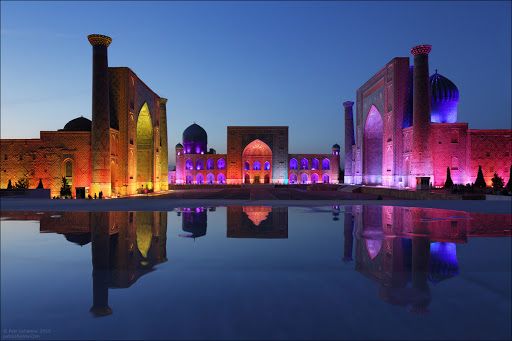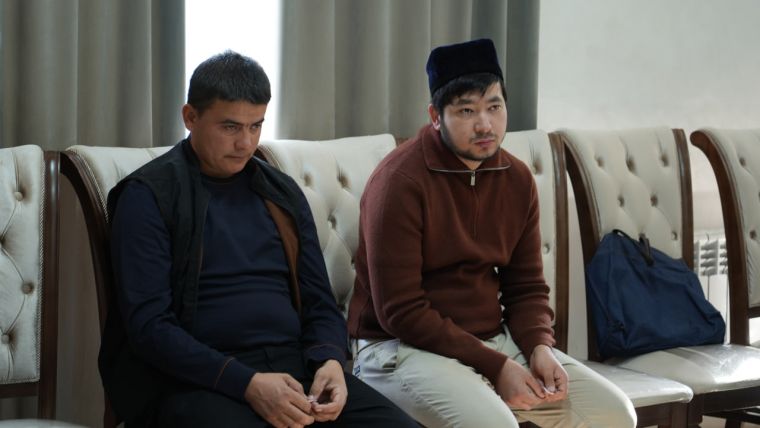Tashkent city



All the famous ancient places to visit in Uzbekistan What comes to mind when Uzbekistan's tourist attractions are in question? First of all, it is the country's architectural heritage, richest in Central Asia: masterpieces of medieval Islamic architecture - minarets, mosques, madrasahs (Islamic colleges), mausoleums, fortresses, palaces, etc as well as ancient Zoroastrian and Buddhist temples and ruins of ancient settlements... Among all of them stand out the famous Registan Square in Samarkand, with the three marvelous madrasahs built in the XV-XVII centuries at its three sides, and the grand Gur-e Amir Mausoleum where the great conqueror Tamerlane (Timur ) is buried. Bukhara is first of all associated with Ismail Samani Mausoleum dating back to the 9th century and the 50-meter-tall Kalyan Minaret. (There are over 170 important architectural monuments altogether in the city.) Khiva is famous for its unique Ichan-Kala 'inner city' historic part - a walled medieval Central Asian town being preserved as it was in the past - an artifact town.. . Thanks to its vast territory and very diverse terrains, Uzbekistan also boasts numerous natural attractions. They are the impressive tracts of the Kyzylkum Desert, for instance, and of course the majestic Tien Shan Mountains with their resorts and fascinating landscapes. SIGHTSEEINGS OF TASHKENT Tashkent ('a stone city'; also spelled Toshkent), Uzbekistan's capital, is in all respects a Central Asian regional hub; it is the fourth largest CIS city with a population of around 3 million. Today it has all the features of a modern metropolis and a capital, with a lot of attractive Central Asian-style newly-built structures and sites, as well as Soviet-era buildings. Tashkent is rich in museums, theaters and concert halls; there are a lot of traditional Central Asian and European-like restaurants and clubs, and several very nice parks, including a zoo and a huge botanical garden. Tashkent is the only Central Asian city which has an underground railway system (Tashkent Metro). It is probably one of the world's most beautiful: its stations are real works of art, each featuring unique designs covering various themes, such as famous people, events, valued notions, terms or just common nouns. Tashkent is a city of wide streets and numerous avenues, and is abundant in trees; although it is located in Central Asia, it has recently had a lot of evergreens planted, in addition to its traditional planes, poplars, oaks, willows, etc. Tashkent looks modern - it grew to its present size mainly during the Soviet times - but it is over 2,000 years old, and there is still some of its old part surviving, called Old City or Old Town. Tashkent Old city features a huge traditional Central Asian bazaar (there are many large and small bazaars in the city; most farmer products in the city are sold through them, not through stores), as well as several Islamic architectural monuments and quaint adobe mahalla neighborhoods , quite worth visiting for their charm. The Independence Square in Tashkent Khazrati Imam Mausolesm of Abubakr Kaftal Ash-Shashi Architectural Complex view all Tashkent Sightseeings »» SIGHTSEEINGS OF SAMARKAND Samarkand (also Samarqand) famous Uzbekistan's historc city. Over 2750 years of age, it boasts very spelled is probably the most
Prepeared by Imam Bukhari Tashkent Islamic Institute , Department of languages , English teacher Kadirov Farrukh

The ongoing dialogue between the leadership of the Muslim Board of Uzbekistan and the public continues to play a vital role in addressing various social and religious issues. Each appeal submitted by citizens during the public receptions is given due attention and is being resolved appropriately.
On October 29, the First Deputy Chairman of the Muslim Board of Uzbekistan, Homidjon Ishmatbekov, received citizens and listened to their appeals, complaints, and suggestions.
During the meeting, issues related to mosque conditions, the work of imams, Hajj and Umrah matters, family concerns, and requests for financial assistance were discussed in detail.
Participants seeking advice on family matters were provided with guidance and Sharia-based recommendations, while those in need of material support received assistance in accordance with the established procedures.
Citizens expressed gratitude and heartfelt prayers, noting the sincere attention and care shown during the meeting.
Indeed, easing the burdens of others and contributing to the resolution of their troubles is among the most virtuous deeds. As the Prophet Muhammad (peace and blessings be upon him) said:
“Whoever fulfills the need of his brother, Allah will fulfill his need. Whoever relieves a Muslim from a hardship, Allah will relieve him from one of the hardships of the Day of Resurrection.”
— Narrated by Imam al-Bukhari
Such public receptions are also being held every Wednesday across the country by the regional branches of the Muslim Board and in all mosques under the supervision of local imams.
Press Service of the Muslim Board of Uzbekistan



